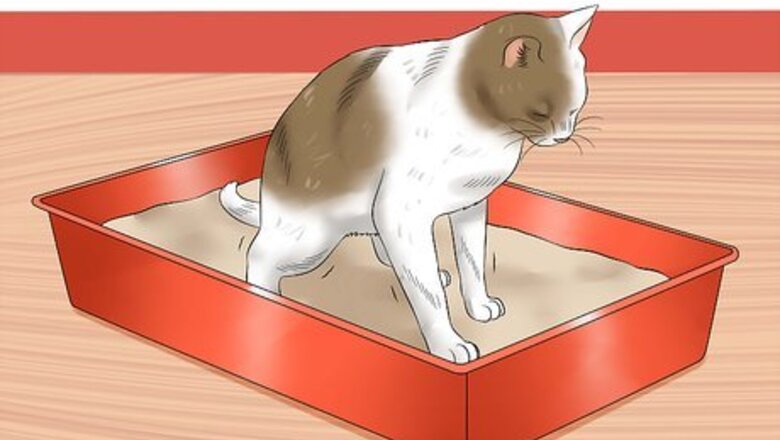
views
X
Research source
Ludwig, Lori: Constipation/Obstipation and Megacolon. In Cote, E. (ed): Clinical Veterinary Advisor: Dogs and Cats Ed 1 St. Louis, Elsevier, 2007, pp 234-236.
Constipation may be uncomfortable for your cat, and it's frustrating to watch her struggle. If your vet approves and your cat tends to be cooperative, you can try giving her an enema at home to relieve the problem.
Recognizing When to Perform an Enema
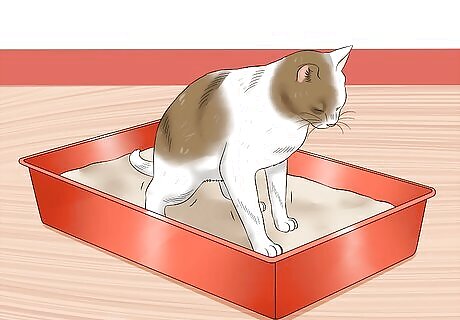
Watch for signs of constipation. If your cat is constipated, you may notice her repeatedly enter the litter box, squat to defecate, but fail to pass any feces. Your cat may strain and vocalize (meow, cry, yowl) during these attempts. Other symptoms can include low energy, loss of appetite, throwing-up foam or undigested food, and abdominal pain. Sometimes, you can even feel a large hard lump of feces if you gently push on your cat's abdomen. Signs of constipation can look similar to signs of a urinary blockage, which is an emergency that can quickly become life threatening. If you suspect your cat has been straining to urinate, or if you have not seen any urine in the litter box in more than 12 hours, take your cat to the vet to rule out a urinary obstruction.
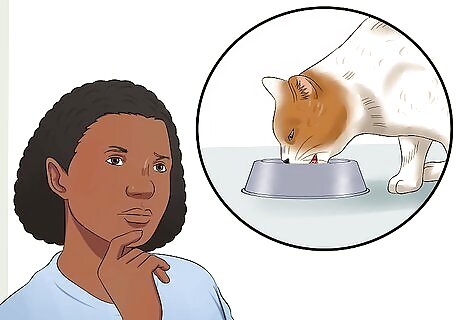
Try to identify the cause of constipation. Tumors and foreign objects like hair, bones, and plant material can obstruct the passage of feces. Sometimes diet can play a role in constipation. If your cat has a history of constipation, you might add canned food for extra moisture or enrich the cat's diet with psyllium. Metabolic or endocrine disorders like dehydration, electrolyte imbalances, or obesity may also cause constipation. Neurological problems from spinal cord disease, pelvic injuries, or primary nerve dysfunction can cause constipation in some cats. Megacolon may develop when feces is impacted in colon and colon no longer pushes contents along.
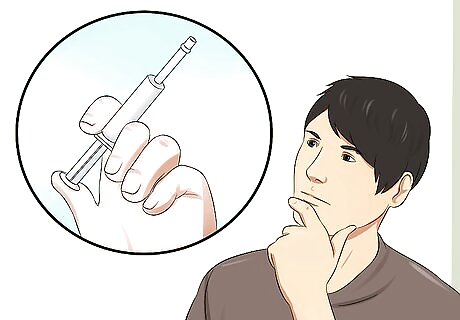
Consider administering an enema at home only in cases of mild, occasional constipation. You can try an enema at home if your cat is mildly constipated (less than 2 to 3 days) or when constipation is not chronically observed. If the case is more severe or you think your cat may have a more complicated disorder, seek veterinary care. Your cat may have a more complicated disorder if you notice changes in water intake, very low energy level, severe vomiting, or a complete loss of appetite. Sometimes, a constipated cat might be slightly less hungry from feeling full or from the discomfort of being constipated, but may still be willing to eat.
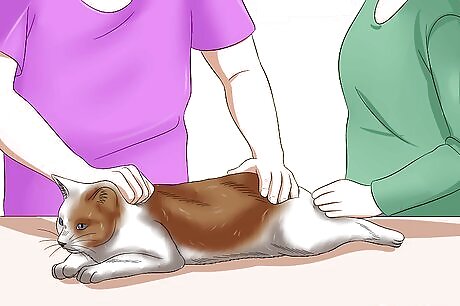
Take your cat's temperament into account. Attempt an enema at home only if your cat is docile and gentle. She shouldn't have other underlying painful or medical conditions like fractures, arthritis, and kidney problems. One potential advantage of giving an enema at home is that your cat is in a more familiar place and may be calmer. You may want to have a second person present to help gently restrain your cat. Your cat may still be uncooperative and might scratch or bite you. Don't excessively restrain your cat if she is fighting back.
Preparing for the Enema
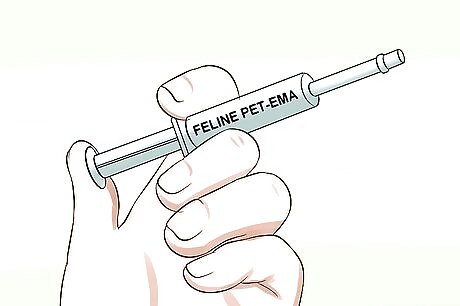
Purchase an appropriate enema. The best kind of enemas are specifically prepared for cats. These contain dioctyl sodium sulfosuccinate in glycerine like Feline Pet-Ema ®. The dioctyl sodium sulfosuccinate draws water into the feces causing it to soften. The glycerin portion helps in lubricating the rectum. You can easily find cat enemas for sale online. Alternatively, consider using warm water or mineral oil. You can also use warm water or mineral oil. Warm clean water is the cheapest and safest option since it's not likely to cause dehydration. Mineral oil is also relatively safe, can easily lubricate the rectum, and help small hardened stools pass. But, it can affect levels of fat soluble vitamins (like vitamin D) and should be avoided in cats with underlying kidney disease. If you use water or mineral oil, know that it can take time before the stool softens since it does not draw water from the intestines like sodium-based enemas do. It also lacks lubricating properties. Expect it to take several flushes into the rectum before the feces softens and slowly comes out (from a few minutes to 2 hours). Never use Fleet enemas or any other enema containing sodium phosphate. Cats can absorb sodium and phosphate molecules from these enemas into their blood and tissues. This can lead to a severe electrolyte imbalance and dehydration, which could be life-threatening.
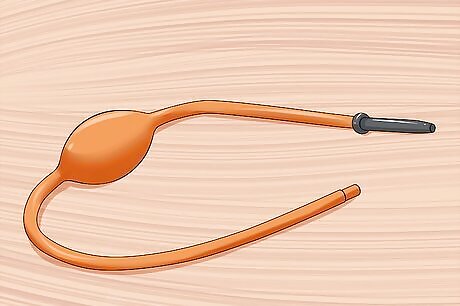
Use the correct, lubricated syringe. If you're purchasing a prepared enema kit, it will come with the correct syringe. If you are using water or mineral oil as an enema, use a 10-25 mL syringe and a soft feeding tube attached to its end. The tips of feeding tubes are rounded, soft and can prevent damage during insertion. Always lubricate the end of the syringe or feeding tube. Place a light coating of lubricant (like KY Jelly or Vaseline) on the end of the syringe or feeding tube.
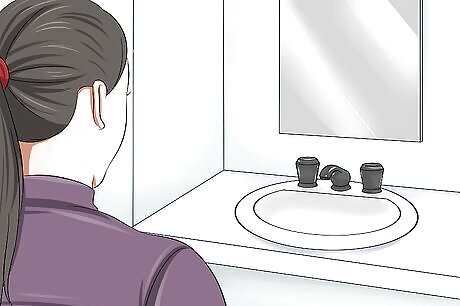
Prepare your environment and materials. Your bathroom is a great place to do enemas because your cat is familiar with the place, it is enclosed, and the cleaning will be confined to a small place afterwards. Clean all the surfaces and assemble your materials. An enema can be a messy procedure. You may want to lay out some towels, absorbent pads, or newspaper on the bathroom floor. You'll be best off wearing clean, plastic gloves. It's important that this process is hygienic for you, too.
Giving the Enema
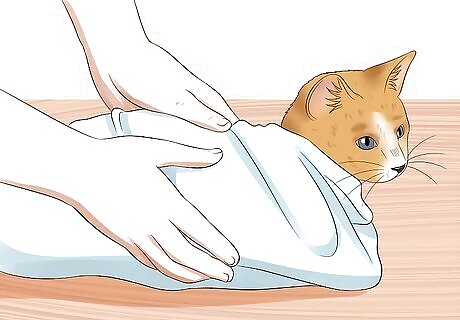
Wrap the cat in a towel. Lay out a clean towel and set your cat in the middle. Pull one side up and over your cat's back and around her side, tucking the free end under her feet. Pull the other side of the towel over the opposite direction in a similar fashion. At this point, your cat should be rolled up like a burrito. If you are alone, snuggle your cat close to your body with her head facing the opposite direction of your dominant hand. Talk to her this entire time in a calm voice. Try to do this during the entire procedure as it will help in calming the cat.
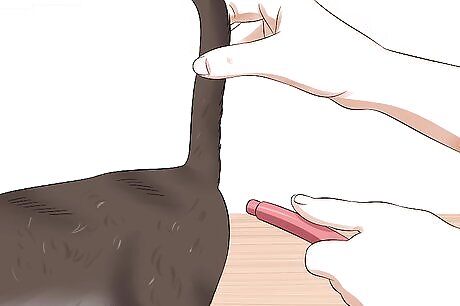
Conduct the enema. Lift the cat's tail and gently insert the tip of the enema syringe or feeding tube attached to a 20cc syringe 2 to 3 inches (5.1 to 7.6 cm) into the rectum. Or you could insert until you feel the hard feces hitting the tip of the rubber tubing. Do not push really hard with the tube or fluid since you could cause rectal trauma or tears, leading to serious medical complications. If you're going to use mineral oil, apply 15-20 ml slowly into the rectum. If you're going to use warm water, slowly administer 50-75 ml. If you're going to use a Feline Pet-Ema ® Enema, first put in 6 ml at a rate of around 1 ml every 3 seconds. After 1 hour, administer another 6 ml of the enema and follow the same procedure as the first administration.
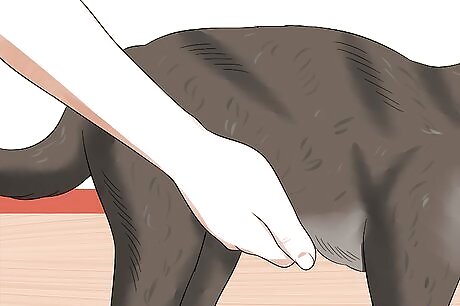
Palpate the abdominal area. Place your palm under the belly between your cat's legs and gently squeeze until you feel the hardened feces. Massage this area in a gentle pinching action using your thumb and the rest of the fingers. In some cats, the feces will come out quickly, after 5 to 10 minutes. In other cats with very hardened stools, it could take 1 to 2 hours before the softened stool passes. You can repeat the enema in 1-2 hours if no stool passes. If the second enema is ineffective, contact your veterinarian.
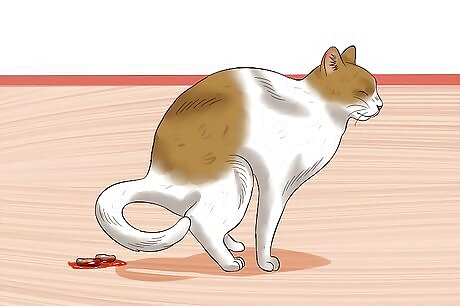
Monitor your cat for complications. You may notice a few small streaks or specks of bright red blood, and that's okay. But if you see large amounts of blood or continuous rectal bleeding, your cat may have an injury in her rectum. See a vet immediately. Be sure to keep an eye on your cat for a few hours. Enemas can sometimes cause vomiting and diarrhea. Your cat could become severely dehydrated, administration of fluids might become necessary.




















Comments
0 comment